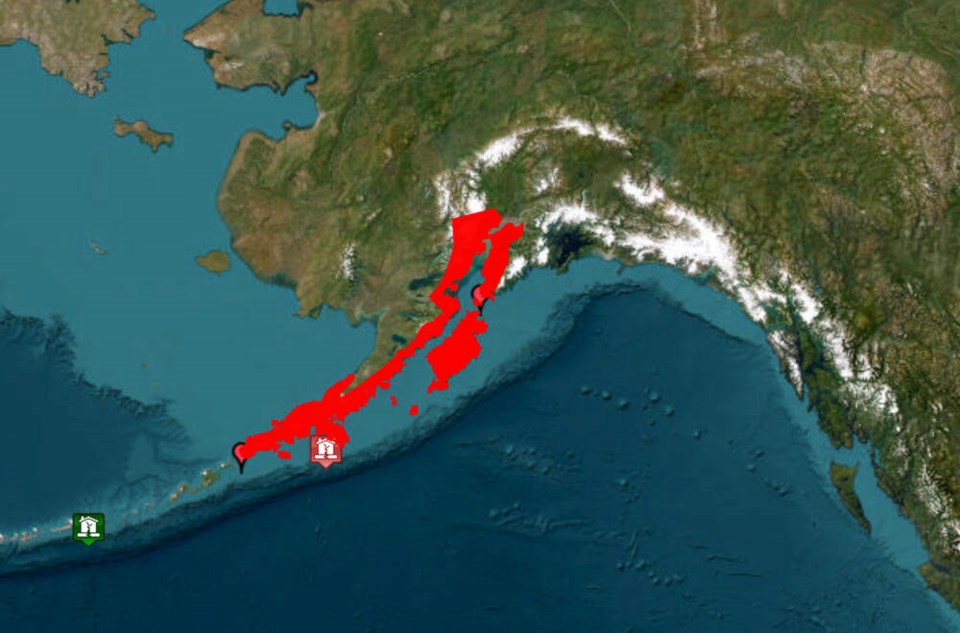The B.C. coast is not at risk of a tsunami following a 7.3-magnitude earthquake off the coast of Alaska, according to the U.S. Tsunami Warning Centers.
The earthquake struck about 80 kilometres south of Sand Point, Alaska, at 1:37 p.m. PT at a depth of 35 kilometres. The earthquake was felt throughout the region.
A tsunami warning issued for parts of Alaska's southern coast has been downgraded to an advisory.
It covers the coasts from Kennedy Entrance, 90 kilometres southwest of Homer, to Unimak Pass, 130 kilometres northeast of Unalaska. Among the larger communities in the area is Kodiak, population 5,200.
EmergencyInfoBC had previously said the risk to B.C. was being evaluated, but an update published by the Tsunami Warning Centers at 2:13 p.m. said there was no tsunami threat to other Pacific coasts in North America beyond Alaska.
The region affected is lightly populated stretch of Alaska’s southern coast .
The first waves were projected to hit the village of Sand Point, a community of about 580 people on Popof Island, in the Aleutian chain.
In Unalaska, a fishing community of about 4,100, officials also urged people to move at least 50 feet above sea level, 1.6 km inland. In King Cove, which has about 870 residents on the south side of the Alaska Peninsula, officials sent an alert calling on those in the coastal area to move to higher ground.
— With files from the Associated Press



